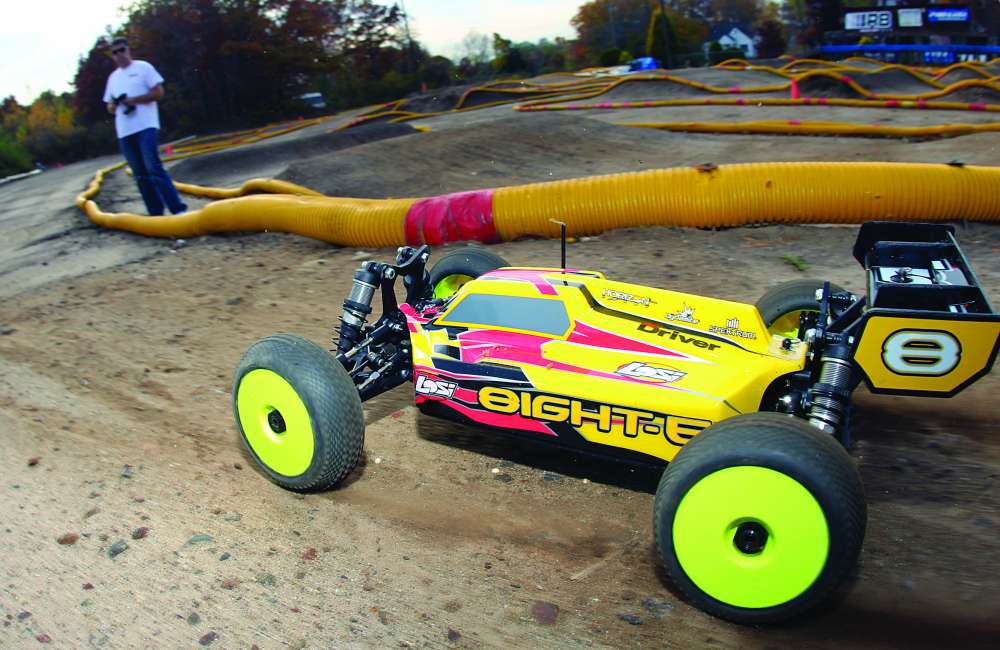By Charlie Suangka
This article was originally published in RC Driver’s October 2015 issue.

Many of us have upgraded from a basic ready-to-run radio system, to an aftermarket system with lots of bells and whistles. Some of us simply installed a shiny new servo for better steering power and control. One of the most overlooked areas is the steering settings in the radio and the basic servo linkages. Some very basic adjustments and tuning can make sure you don’t do any damage or wear out your servo prematurely. This month, we’ll take a walk through checking your radio steering settings, and things to look for when replacing a servo. Much of this should be done to your current setup just to make sure all is well in the land of steering control!
FIRST THINGS FIRST
Before you begin, you will want to make sure the front end’s toe-in/out is correct, as well as the camber. These effect your overall steering and should be correct to start with.
TRIM UP
There are a few different settings to look for on the radio itself, the trim, sub trim, and the end point adjustment or Travel/ EPA settings. Trim and Sub trim do much the same thing; control the center point of your servo. Before you begin, you will want to center the Trim, and the Sub Trim, then remove the servo horn from the Servo itself. You’ll replace the servo horn when the wheels are going as straight as possible. Sometimes, you will be able to adjust the steering link to help keep all the steering parts square and straight. Having a properly built front end and steering will greatly improve steering performance and keep your servo tuning simple and direct.
Once you get the linkages straight, square, and even, you will want to set the main center to make the vehicle drive in a straight line. Usually it’s best to start with the Sub Trim, and rely on the normal Trim for on-the-fly track adjustments.
After the center points have been set, and your vehicle drives in a straight line, it’s time to set the left and right endpoints. Slowly turn the wheel to the left or right and watch for the steering parts to bottom out or stop, or bind up. This can also happen before 100% steering throw, or in some cases, you will find there is more steering throw available from the vehicle. Use the Steering Travel or EPA settings to adjust left and right carefully so you get maximum throw and do not over drive the steering parts. At this point, the vehicle should do equal circles left and right when tested on flat ground. If any adjustments are made to the trim or the steering linkages the process should be restarted.
When installing a new servo, many of the same steps should be taken. It’s important to start with a centered Trim and Sub Trim, as well as the horn on the servo, and properly setup steering parts on the vehicle. New servos may have to be reversed in the transmitter settings, so make sure to check basic direction before you start the install.
If you find a big difference in your left and right EPA settings, it is likely your steering is not set up quite right. Most commonly the steer link from the servo horn to the vehicle is too short or too long. This will create a need for a lot of throw in one direction, and very little in the opposite.
An easy way to check that your steering settings are close is simply to put the vehicle in the air and slowly turn the steering left and right. The wheels should turn smoothly and get the full range of motion without any binding or excessive humming from the servo. If your servo is humming or buzzing at full lock in one direction or the other, you need to take a look at the settings and lower the travel slightly. This buzzing causes excessive heat in the servo, and your ESC’s BEC and will lead to some pretty catastrophic failures for servo, and even your ESC.
 RC Driver The Best In RC Car & Truck News, Reviews & Video
RC Driver The Best In RC Car & Truck News, Reviews & Video 







